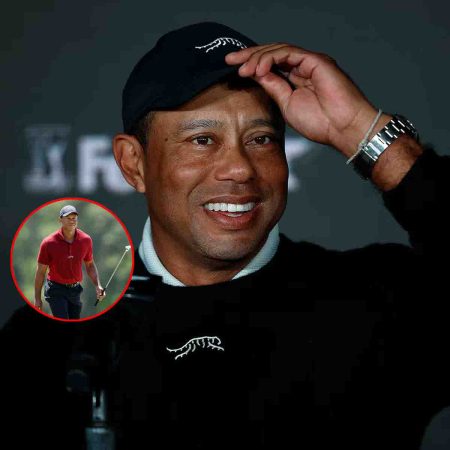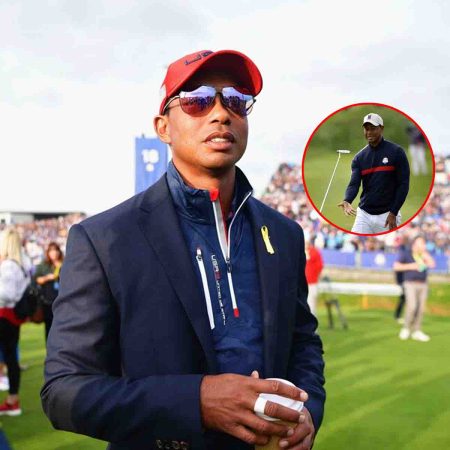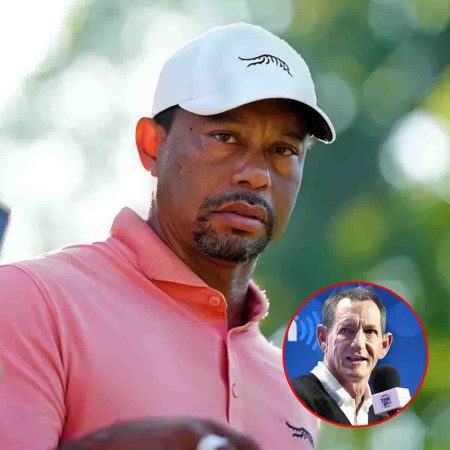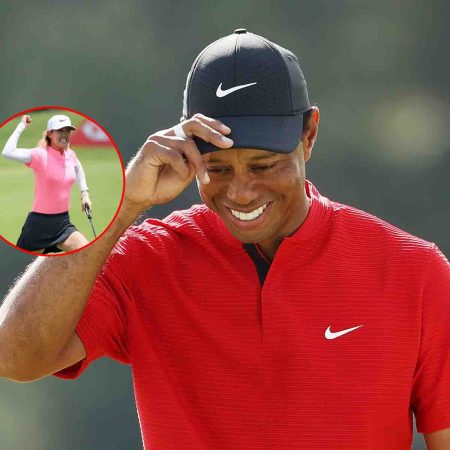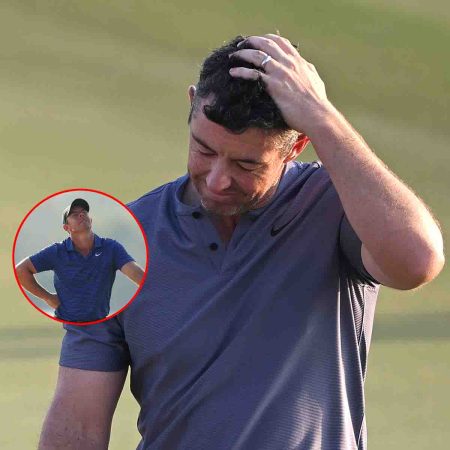Erling Haaland’s secret weapon? Being like an owl. Seriously.
If you were asked to liken Erling Haaland to an animal, which animal would you choose?
A lion? Maybe a shark?
It would certainly be some kind of powerful predator, wouldn’t it?
But what about an owl? Constantly looking around, ready to pounce; a kind of heightened awareness which might help explain why Haaland has been so lethal for Manchester City this season.
His brace against Leeds meant he reached 20 Premier League goals faster than any other player — it took him 14 games, seven fewer than the previous record-holder Kevin Phillips for Sunderland in 1999-2000 (21 games).
In the following match, at home to Everton, Haaland scored the opener, which meant he has scored in 12 of his 15 Premier League appearances.
Much has been said about his technique, physique and speed, but let’s look at his awareness.
“What has impressed me is that I knew he was a guy for big transitions, and over 30 or 40 metres he was unstoppable,” Manchester City head coach Pep Guardiola said of Haaland in October.
“But I didn’t know how good he moves in small spaces in the box. In the end he has scored a lot of goals because he moves really well.
“He is so intuitive, and especially he makes movements I like a lot; as a striker, he goes away from the action to after be close to the ball.”
One of the reasons the 22-year-old is so able to see what is happening on the pitch and act upon it is he is constantly scanning — looking around during the game.
Some coaches call it “checking shoulders”, others “wing mirrors”. Academics call it “visual exploratory activity”. Regardless of the terminology, the basic principle is players can make more informed decisions by being more aware of what is going on around them.
The statistics suggest that Haaland is an informed decision-maker. Across Europe’s top-five leagues this season he has the most goals (21) and the most non-penalty goals (18), but he also ranks inside the top five per cent of Premier League forwards for conversion rate (31 per cent) and top 12 per cent for shot accuracy (52.5 per cent), with an average shot quality (0.19 xG per shot).
His shotmap shows clusters of finishes (red circles) in the six-yard box and a smattering close to the penalty spot. The precision is incredible and, despite the number of shots he has taken from the left half-space, all bar one of the Norwegian’s goals have been scored from within the width of the six-yard box.

The number of large circles tells us that Haaland is frequently in high-quality shooting positions. Including penalties, his 26 big chances — defined by Opta as “a situation where a player should reasonably be expected to score, usually in a one-on-one scenario or from very close range when the ball has a clear path to goal” — are the most in the Premier League. Haaland has hit the target with 20 of them and scored with 16.
These shots are frequently in space, close to goal and often for finishes with the feet, rather than crashing headers over the top of defenders. To be in positions like that repeatedly requires an ability to see and quickly react to all the things that are happening on the pitch around him.
To understand how he does it, let’s analyse his scanning inside and outside the box separately.
Scanning inside the box
His eight Premier League goals from 12 shots inside the six-yard box are the most of any player. What’s worth noting is how often he scores from an unmarked position, particularly when compared to other forwards. He finds space, and he is able to do that because he sees space.
A team of researchers analysed the 2017-18 Premier League and found that forwards scan the least of any position. The authors said this may be due to pressure from defenders dissuading forwards from taking their eyes off the ball. It may also be due to the proximity of opponents, with forwards likely to see them in their peripheral vision anyway. A further plausible explanation is that players become ball-focused closer to goal.
Haaland’s most recent goal, against Everton, is a perfect case study. Kevin De Bruyne dissects the midfield with a pass into Jack Grealish, which triggers a run from Haaland.
Haaland runs away from Ben Godfrey, having been positioned on the defender’s toes to pin the defensive line, then runs inside the centre-back looking for a through ball.
Responding to the threat of Haaland, left wing-back Vitalii Mykolenko moves closer to him, making the defence narrow and leaving Riyad Mahrez in significant space to receive the ball from Grealish (blue arrow).

As Mahrez faces up Mykolenko, the five defenders (pink circles) between Haaland and the ball are all watching the ball. Haaland is not. Instead, he is checking his right shoulder…

Mahrez drives on the outside and gets past Mykolenko. Four defenders plus the goalkeeper Jordan Pickford are in the six-yard box, with Conor Coady having retreated to the goal line. Haaland moves away from the goal to finish with one touch from Mahrez’s cutback, indicated by the gold arrow.

Another example of his scanning is Haaland’s first goal at home to Crystal Palace in August.
With the ball wide on the right he makes a trademark double movement, initially running at the centre-back — in this case Joel Ward — to force the defender towards their own goal and imbalance them, before sprinting off sideways. Haaland’s near-post run is fruitless because De Bruyne overhits the delivery…

… but as the ball drops to Phil Foden at the far post, the six closest Crystal Palace defenders are all looking at the ball. Once again, Haaland is not. Instead, he checks left to see the positioning of Jeffrey Schlupp.

As he sees Joachim Andersen stepping forward to Ilkay Gundogan, Haaland knows he has a clear run at the cross because Schlupp is on the wrong side, while Andersen can’t even see him. Without moving, Haaland has allowed space to open up around him.

In the example above, Haaland looks away from the ball while it is going away from him but is fully focused on it when Foden is crossing, and he then rapidly responds to what he has just seen.
“Lots of players have great peripheral vision, but are really slow in their responses,” Dr Sherylle Calder told The Athletic in April.
“So peripheral vision has a role, but you need information from scanning around you. I call that peripheral awareness — it’s the ability to respond to your peripheral.”
Scanning outside the box
Haaland’s second goal against Manchester United in October is a trademark De Bruyne cross (gold arrow) and Haaland finish.

But let’s analyse the detail. The four grabs below are from a two-second sequence as De Bruyne receives the ball and sets to cross.
Haaland initially positions himself on Raphael Varane, but on four separate occasions he looks at the ball before checking the position of the centre-back.

He moves behind the Frenchman, preventing Varane from seeing him and the ball at the same time, but critically he is constantly getting an updated picture of exactly where the ball is and how the players are positioned around him — and this is right up until De Bruyne shapes to cross, meaning the No 9 has the most up-to-date mental picture of the players’ positions and can then track the flight of the ball.
Geir Jordet, a professor at the Norwegian School of Sports Sciences and researcher into scanning and psychology, has analysed Haaland and found him to be a considerably above-average scanner for a forward — his rates for looking around per second are closer to a central midfielder’s.
Haaland’s ability to constantly see what is happening and know the positioning of players could go some way to explaining his seamless transition from the Bundesliga, where he played for Borussia Dortmund.
For City’s opener at Aston Villa in September, the goal is constructed in a slightly different way.
Haaland is positioned on the back four and, as Bernardo Silva steps inside to combine with De Bruyne, Haaland checks to see the space at the back post.

The timing here is crucial because Haaland knows where the space is and sees Ashley Young being pinned by Foden, even before De Bruyne has the ball.
So as De Bruyne gets into a crossing position down the right, Haaland makes the arced run towards the back post where he finishes with one touch.


Gundogan’s mesmerising through ball (gold arrow) makes City’s fourth goal against Crystal Palace, but Haaland’s ability to withstand pressure from both centre-backs owes something to his vision…

He times the scan perfectly, looking over his left shoulder to see the positioning of Ward and braces himself for contact.

Knowing what is coming, Haaland shapes his body to screen the ball from Ward and use the pace on the ball to get away from the defender. Haaland only takes three touches. With the third, he scores.

Haaland’s only had one goal from outside the box this season, at Wolves in September, and again it came from him looking around before the ball was played, then exploiting space before other players spot it.
In fact, before Bernardo has even controlled the ball, Haaland has spotted the space between the Wolves centre-backs (yellow circles) and is calling for an early forward pass.

Because he has seen the space early, Haaland is on the move before Bernardo has played the pass.

He then gets into a position ahead of the defenders to line up a shot from outside the box and score.
After the 3-1 win at Leeds, Haaland said he was “more hungry and more ready than ever” following his non-World Cup break. His goals against Leeds and Everton suggest that might be true.
Liverpool’s Mohamed Salah holds the record for most goals (32) in a 38-game season. However, it is more likely that Haaland will have the 34-goal record — achieved by Andrew Cole and Alan Shearer when there were 22 teams in the Premier League — in his sights.
And when he has something in his sights, Haaland doesn’t usually miss.
(Top photo: Eddie Keogh/Getty Images)
Source: The Athletic



